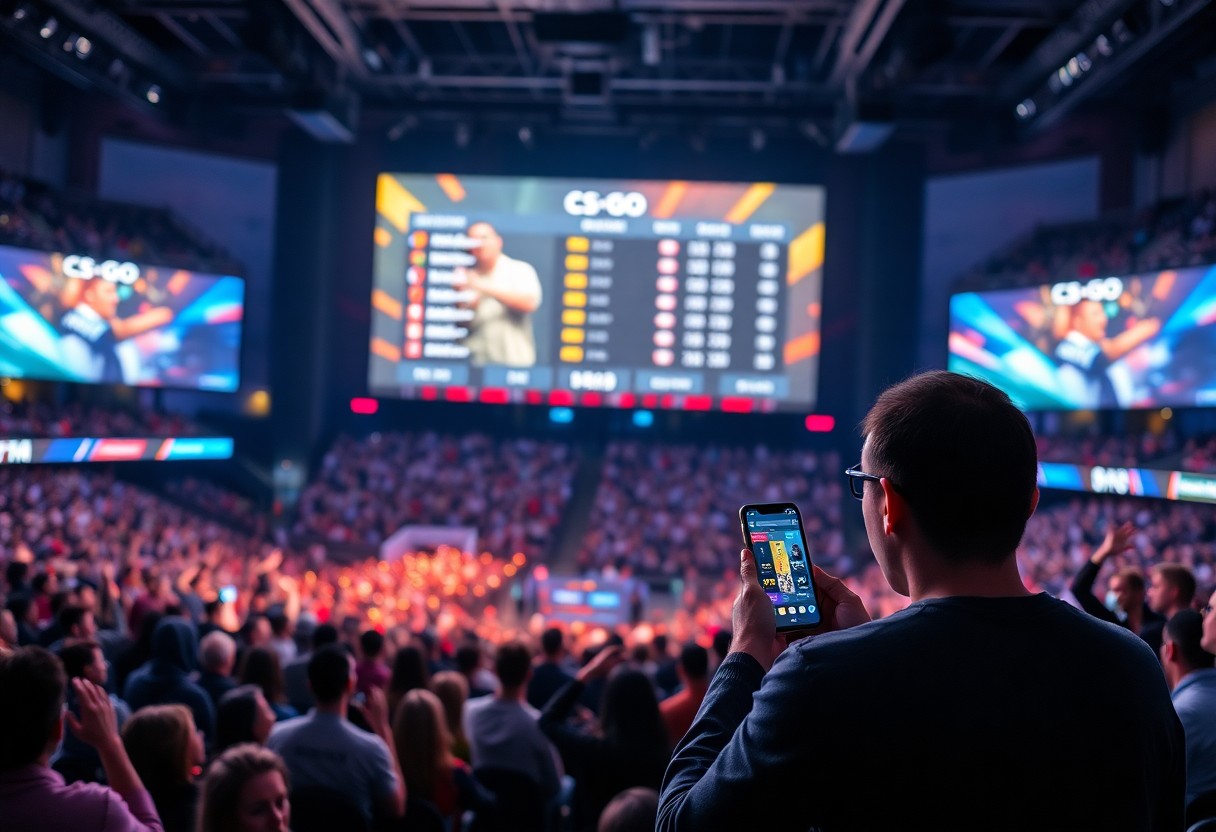There’s a growing discourse surrounding the salary structures in esports compared to traditional sports, as both industries experience unprecedented growth and audience engagement. While traditional athletes have long benefited from multi-million dollar contracts and lucrative endorsement deals, esports players are rapidly closing the gap, with top competitors earning impressive salaries and prize money. This blog post investigates into the current landscape of esports salaries, exploring the factors influencing earnings in both realms, and shedding light on how the two sectors compare in this evolving financial arena.
Overview of Esports Salaries
Before diving deeper into the financial aspects of esports, it’s important to understand how player salaries in this burgeoning industry stack up against those in traditional sports. With the rapid growth of esports in recent years, player earnings have become a subject of interest for both aspiring gamers and investors alike. This section will provide a grounded overview of average salaries within the esports realm while also comparing them to the established monetary expectations found in traditional sports.
Comparison of Average Salaries
Below is a concise comparison of average salaries from selected esports titles and traditional sports leagues:
| Sport/Esport Title | Average Salary |
|---|---|
| League of Legends | $100,000 |
| Dota 2 | $125,000 |
| Counter-Strike: Global Offensive | $70,000 |
| NBA | $8 million |
| NFL | $3 million |
Factors Influencing Earnings
Overview of factors influencing earnings in esports reveals that multiple aspects play a prominent role in determining how much players take home. These can be linked to both intrinsic and extrinsic elements that drive the competitive landscape. While giant organizations are willing to invest heavily in potential superstars, the variability present in the industry adds complexity to salary negotiations. Some key factors include:
- Player Skill Level
- Marketability
- Team Sponsorship Deals
- Prize Money from Tournaments
- Streaming Revenue and Fan Engagement
Thou, these factors combine to shape the financial landscape for professional esports athletes, setting the stage for their growth potential within an evolving market.
At the intersection of talent and opportunity, player salaries are further influenced by demand and the popularity of specific games. As esports continues to mature, the scarcity of elite players can drive wages upward, particularly for those who establish a strong online presence and fan following. Additionally, teams that secure lucrative sponsorships or engage an active and supportive community can afford to offer competitive salaries and bonuses. Key influences include:
- Game Popularity and Community Engagement
- Team Performance and Competitive Success
- Industry Sponsorship Activity
- Content Creation through Streaming Platforms
- Influence of Social Media on Player Profile
Thou, understanding these dynamics can provide valuable context for those interested in the economics of esports and its potential for sustainability as a credible profession.
Overview of Traditional Sports Salaries
Clearly, traditional sports have established a long-standing framework for player salaries that reflect the immense revenues generated through ticket sales, merchandise, broadcasting rights, and sponsorship deals. From professional leagues such as the NFL, NBA, MLB, and NHL to international competitions like the FIFA World Cup and the Olympic Games, athletes often command salaries that are significantly higher than those in many other industries. These figures not only highlight the financial success of traditional sports but also the value placed on athletes who perform at the highest competitive levels.
Major Sports Comparison
Among the various professional sports leagues, a significant disparity exists in player compensation. Some sports are known for their lucrative contracts, while others offer more modest salaries. The following table illustrates the average player salaries across major sports in the United States.
| Sport | Average Salary (USD) |
|---|---|
| NFL | 2.7 million |
| NBA | 9.7 million |
| MLB | 4.4 million |
| NHL | 3.2 million |
Salary Trends Over the Years
Sports salaries have experienced notable trends over the decades, showcasing a trajectory of increasing compensation for elite players. Factors such as increased media rights deals, more extensive global reach, and heightened fan engagement have all contributed to the upward pressure on salaries. In particular, leagues like the NBA and NFL have seen a remarkable surge in player contracts due to the growing revenues they generate, pushing the average salary levels to unprecedented heights.
Overview of recent trends indicates that while rookie contracts may be less lucrative, veteran players often see substantial increases in their pay as they gain experience and contribute to their teams’ successes. Additionally, endorsement deals have become a significant source of income for many athletes, further amplifying their earnings beyond just salaries. The movement toward guaranteeing contracts has also been more prevalent, ensuring players receive greater financial security as they navigate their careers.
Sponsorship and Endorsements
Some key components of income for both esports athletes and traditional sports professionals stem from sponsorship and endorsement deals. These partnerships serve as significant revenue sources, often eclipsing salaries earned from competition alone. For esports, the involvement of global brands and local businesses continues to expand, offering athletes a range of lucrative opportunities that reflect the growing recognition of competitive gaming as a viable entertainment option. However, reliance on sponsorships can also fluctuate based on market trends, performance, and viewer engagement, making this aspect of income somewhat unpredictable.
Esports Sponsorship Landscape
Below are some insights into the current sponsorship landscape of esports, which has seen massive growth over the past few years. Major technology companies, beverage brands, and even traditional sports franchises have entered the market, seeking to tap into the vast and engaged audience that follows esports. For instance, organizations like Team Liquid and Fnatic have secured multi-million dollar sponsorship deals that highlight the increasing interest from established brands. Moreover, as tournaments attract larger viewerships, the potential for players to earn from these partnerships substantially increases, creating a more competitive atmosphere for attracting high-profile sponsors.
Traditional Sports Endorsements
Sponsorship deals in traditional sports have become synonymous with the financial landscape of major leagues, where athletes often garner multi-year contracts worth millions from endorsing high-profile brands. Major companies look for the relatability, marketability, and charisma of athletes to enhance their own brand visibility. The power of endorsements in traditional sports is evidenced by high-profile athletes such as LeBron James and Serena Williams, who have secured massive deals with brands like Nike and Wilson, respectively, thus solidifying their status as not only sports icons but influential marketing figures.
Traditional endorsements often go beyond just monetary compensation, as they frequently involve extensive collaborations in advertising campaigns, product development, and personal branding ventures. Athletes cultivate their personal brands to attract lucrative sponsorship collaborations that enhance their public image, leading to even greater financial gain. In contrast to the evolving landscape of esports, which is still in its formative stages regarding sponsorship dynamics, traditional sports endorsements reflect a well-established system that has proven effective for both athletes and brands alike.
Career Longevity and Stability
Many factors influence career longevity and stability in both esports and traditional sports. In esports, players often face intense competition and rapidly changing gaming environments that can lead to short career spans. The average age of a competitive esports athlete tends to be much lower than that of traditional sports, often peaking in the early 20s before younger talent emerges. Additionally, the physical demands can differ greatly; while traditional sports may require long hours of physical training, esports focuses more on cognitive skills and reaction times, which can affect how players manage their careers over time.
Esports Career Trajectories
Between the emergence of new games and shifts in fanbase preferences, esports career trajectories can be unpredictable. Players may rise to prominence quickly, sometimes earning substantial salaries and sponsorship deals, but can equally find their careers short-lived as newer talent or game titles dominate the scene. Many professional gamers must constantly adapt, often transitioning between roles or games, which can create instability and uncertainty in their careers.
Traditional Sports Career Longevity
Longevity is generally more predictable in traditional sports, where athletes often enjoy longer careers due to established leagues and systems that support player development throughout their lives. In team sports, players can remain active in competitive play into their mid-30s or even 40s, depending on their physical condition and the nature of their sport. Factors such as adherence to training regimens, technological advancements in sports medicine, and opportunities beyond playing, such as coaching or commentary, can also contribute to extended careers.
Also, traditional sports often come with a structured pathway for athletes, including youth leagues, collegiate athletics, and professional tiers that provide opportunities for development and stability. Unlike in esports, where a player may find themselves in retirement after just a few years of peak performance, many traditional athletes can cultivate a multifaceted career that eases their transition into retirement, promoting long-term financial stability and career satisfaction.
Public Perception and Market Growth
Unlike traditional sports, which have a long-established history and communal acceptance, esports has frequently struggled with public perception. Many view competitive gaming as a niche activity predominantly enjoyed by younger audiences, which could hinder the broader acceptance of esports as a legitimate professional arena. However, as gaming has evolved and gained traction in mainstream media and entertainment, the perspectives surrounding esports are shifting. This increasing visibility has contributed to a booming industry, driven by sponsorship deals, major tournament events, and a growing number of viewers, allowing esports to carve out its place alongside traditional sports.
Esports Acceptance in Society
The acceptance of esports within society has made significant strides in recent years. Once dismissed as mere pastimes, competitive gaming events now attract enormous audiences, both live and online, showcasing players’ skills and strategies in ways that resonate with sports fans. Furthermore, elite universities are starting to offer scholarships for esports athletes, validating the pursuit as a legitimate path for aspiring gamers. This institutional recognition bridges the gap between esports and traditional sports, promoting wider acceptance of competitive gaming as both a spectator sport and a viable career choice.
Traditional Sports’ Established Fanbase
Society has long-standing enthusiasm and loyalty toward traditional sports, which have developed extensive fanbases over decades or even centuries. These established communities are often characterized by familial ties and cultural narratives that contribute to longevity in attendance and viewership. Sports like football, basketball, and baseball have set the standard for fan engagement, with each sport fostering unique traditions, rivalries, and local pride. This foundation has created a stable ecosystem of merchandise, media coverage, and sponsorships, further entrenching these sports in public consciousness.
Growth in traditional sports has been fueled by mass media and marketing strategies that consistently engage fans, creating a continuous cycle of attendance and participation. Multi-channel broadcasting options have expanded access to games, drawing newcomers while keeping loyal fans engaged. This level of recognition and resource investment makes it challenging for esports to establish a similar foothold, although its rapid rise signals a future where both domains may coexist and flourish in their ways.
Future Trends and Predictions
Not only is the landscape of both esports and traditional sports evolving rapidly, but their respective salaries are also undergoing significant transformations. As the popularity of esports continues to surge, it is expected that the salary disparities between esports athletes and their traditional counterparts will decrease in the coming years. Many analysts predict that as more sponsorships, media rights, and investment opportunities permeate the esports ecosystem, the average salary for professional gamers could see substantial growth, potentially rivaling that of athletes in traditional sports leagues.
Esports Salary Projections
With various factors contributing to the dynamic nature of esports, including technological advances and increasing audience engagement, salary projections for esports players are becoming more optimistic. The rise of multi-platform streaming services and mainstream recognition are further fueling market demand. Companies are investing heavily in esports franchises, which in turn is leading to higher salaries for players at both the team and franchise levels. As competition intensifies, it is likely that the overall earning potential for top-tier esports athletes will continue to grow, signaling a bright financial future for individuals in this field.
Traditional Sports Adaptations
On the other hand, traditional sports organizations are increasingly adapting to the digital age. Various leagues are establishing partnerships with esports organizations, creating hybrid events that merge conventional sports with competitive gaming. By doing so, they are not only reaching a younger audience but also exploring new revenue streams through merchandise sales, sponsored content, and new media platforms. This confluence demonstrates that traditional sports are willing to embrace change and seek collaborative opportunities with esports, which can also lead to enhanced engagement for fans, elevating the overall market for both industries.
Even established sports leagues are exploring the incorporation of esports into their business models. The NFL, NBA, and other organizations have either created their own esports leagues or entered partnerships with existing ones, aiming to tap into the burgeoning fanbase that spans beyond age and geographical boundaries. This blending of athleticism and digital skills could lead to a new wave of viewership, bringing both realms closer together and paving the way for innovative sponsorship deals. As these trends continue to evolve, the relationship between esports and traditional sports is set to redefine what it means to be an athlete in the modern era, potentially altering salary structures across the board.
To wrap up
Presently, the landscape of esports salaries is becoming increasingly competitive when compared to traditional sports. As the audience for esports continues to grow exponentially and sponsorships flood the market, the financial rewards for professional gamers are beginning to mirror those of some athletes in conventional sports. While the top-tier esports players may not yet rival the highest earners in leagues like the NBA or NFL, the disparities are narrowing. This shift indicates a legitimization of esports as a career path and a recognition of the skills involved in competitive gaming.
Moreover, the structure of earnings in esports tends to differ significantly from traditional sports. In esports, prize pools from tournaments can be substantial and can vary widely, unlike the more consistent salaries that athletes in traditional sports receive. This variability can be a double-edged sword, introducing both high reward potential and financial instability. As the esports industry continues to evolve and secure a larger foothold in the entertainment sector, it is likely that the gap in salaries between esports and traditional sports will continue to narrow, creating further opportunities for players in this dynamic field.






